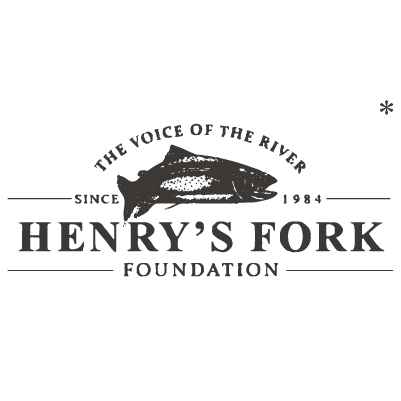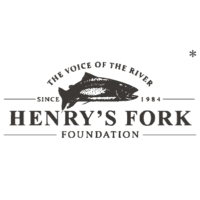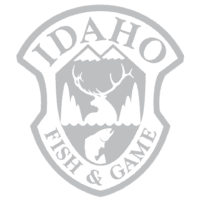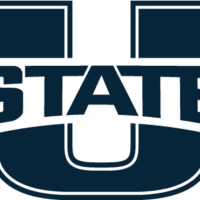Our project goal is to increase fish habitat and improve water quality through a unique mechanism: utilizing small-scale, on-farm collaborative programs to increase precision of irrigation management, thereby reducing the need for irrigation water delivery and resultant drawdown at Island Park Reservoir. The HFF aims to protect the fishery and aesthetic qualities of Island Park Reservoir by utilizing a portfolio of data-driven, collaborative conservation projects to reduce annual drawdown to no more than 60,000 acre-feet out of 135,000 acre feet, a number shown to be beneficial to downstream water quality and fisheries. We will next assess the efficacy of irrigation efficiency and precision management projects as a best management practice for improving fish refuge habitat in Island Park Reservoir during stressful thermal and oxygen conditions in the summer. Initial data indicate fish populations are affected by reservoir drawdown which also affects thermal and oxygen refugia. Our first monitoring goal will be to understand how thermal and oxygen refugia within the reservoir react to drawdown and assess the effect of refuge habitat availability on fish populations. Next, we will assess the relative role of the cool, spring-fed Henry’s Fork of the Snake River upstream of Island Park Reservoir (“Upper Henry’s Fork”) in provisioning thermal and oxygen refuge habitat within the river/reservoir system, and whether or not there are linkages between reservoir drawdown and refuge habitat quantity and quality in the Upper Henry’s Fork. In the river, we think fish habitat selection is driven by bioenergetics, namely that fish select habitat that provides the most food per unit energy expenditure. Therefore, fish habitat will be more abundant if there is more food available. More food is available if there are more nutrients. More nutrients could be delivered to the river by the spawning migrations of reservoir fish, especially kokanee salmon, upstream. Therefore, the role of the Upper Henry’s Fork in refuge habitat provision may be controlled by drawdown in Island Park Reservoir. In short, the Farms and Fish component of the project leads to lower drawdown, and the ecological monitoring component of the project quantifies the fisheries link between the river and the reservoir and refines reservoir management objectives.
Methodology
Objective 1 aims to expand the HFF’s Farms and Fish program to work towards a goal of reduced drawdown of Island Park Reservoir. Through the Farms and Fish Program, HFF has begun working to identify the strategies that have the strongest likelihood of meeting objectives within the watershed. The Program specifically aims to have a reduction in consumptive use of water through emerging water markets and alternative crop systems. This is done through a diversified portfolio of programs aimed at water saving. New funding will support HFF’s strategic implementation and scaling of on farm, field specific, irrigation technology advancements by placing an incentive to lessen demand on physical storage in Island Park Reservoir and lessen diversions of water from the Henry’s Fork and its tributaries.
RFHP support will fund Software Advisor Packages placed on center pivots with one or more farmers to apply irrigation water and maintain soil moisture for plant growth efficiently and uniformly. This software enhancement uses soil-water balance irrigation concepts and methods, along with crop growth models, as-applied irrigation data and hyper-local, field-specific weather data to generate the data needed to make more informed irrigation decisions. The precision scheduling software utilizes a cloud-based application that is easy to track and monitor. Initial estimates provided by center pivot irrigation manufactures clinical trials suggest a 25 to 50 acre-feet. savings per center pivot. An obtainable goal of 5 center pivots in the Henry’s Fork Watershed would result in a possible 750 acre-feet savings in drawdown from Island Park Reservoir.
Objective 2 aims to expand the HFF’s watershed-wide water quality monitoring network to include a more comprehensive assessment of Island Park Reservoir. The goal is to understand how reservoir thermal and oxygen conditions may respond to drawdown and whether thermal and oxygen conditions are important for key sportfish such as kokanee salmon and rainbow trout. RFHP support will allow for increased spatial scale of thermal and oxygen water-column profiles, and the expertise needed to collect, process, interpret, and distribute the resultant data. Increasing spatial scale and temporal frequency of thermal and oxygen profiles will allow for accurate calculations of the area of fish habitat refugia within the entirety of Island Park Reservoir with reservoir draw down. This is important as Island Park Reservoir fish thermal and oxygen refugia may display considerable spatial and temporal variability, which has not been captured to-date since the HFF has only monitored Island Park Reservoir thermal and oxygen conditions at one location. Island Park Reservoir has a large, shallow, groundwater-influenced western basin that may be critical for habitat provisioning. Capturing conditions in this western basin will be critical for obtaining a complete understanding the relationship between drawdown and fish habitat availability. A quantification of the benefits to the fishery of reduced drawdown will be useful in the management of Island Park Reservoir to benefit both water users as well as anglers.
Greater spatial scale of thermal and oxygen profiles creates more accurate modeling of fish habitat quantity and quality. We can combine thermal and oxygen conditions with zooplankton and fisheries data from Idaho Fish and Game (IDFG) to model “Net Rate of Energy Intake” (NREI), which allows for explicit measures of fish growth potential within Island Park Reservoir and how that habitat changes with drawdown. NREI models utilize the premise of energy/mass balance, where inputs are the amount of food available (invertebrates, zooplankton, etc.) less the costs of digestion, metabolism, and swimming, all of which are tied to thermal/oxygen habitat availability. The outputs from NREI models are measures of fish growth potential, measured in Joules/second (J/s). The quantity of fish habitat is inferred as the volume of water (m3) with a positive growth potential (J/s > 0), and the quality of fish habitat is inferred as the magnitude of growth potential (average J/s). Therefore, we can infer the total volume of fish habitat and quality of fish habitat within Island Park Reservoir as the reservoir is drawn down. Finally, NREI outputs can be used to estimate fish carrying capacity (Wall et al. 2015), including that of kokanee salmon under various drawdown levels, allowing managers to predict kokanee salmon run return numbers and identify critical drawdown levels to support a quality fishing experience.
Objective 3 aims to utilize bioenergetics monitoring to understand the relative roles of the Upper Henry’s Fork and Island Park Reservoir as fish habitat refugia, and whether or not increased kokanee salmon returns will have an impact on total habitat availability as hypothesized in Figure 4. Funding has already been sought from the IDFG Commission Challenge Grant, the Idaho Fish and Wildlife Foundation (IFWF), as well as HFF membership to fund an ongoing investigation into the relationship between kokanee-based nutrients, invertebrate availability, and fish habitat in the Upper Henry’s Fork. With this funding, we are modeling NREI within the Upper Henry’s Fork River to obtain estimates of fish habitat quantity (m3) and quality (mean J/s) under both current conditions as well as conditions that could be brought about by higher kokanee salmon returns. Therefore, RFHP support will provide key contextualization for habitat in the Upper Henry’s Fork by comparing current and optimal fish habitat in the Upper Henry’s Fork with the quantity and quality of fish habitat in Island Park Reservoir via a common currency: fish habitat quantity (m3) and quality (mean J/s) as calculated by an NREI model. Therefore, we will be able to make comparisons of fish habitat quality and quantity between Island Park Reservoir and the Upper Henry’s Fork across a range of drawdown values, thereby obtaining a quantification of whether the Upper Henry’s Fork could provide an appreciable amount of refuge habitat for reservoir-based fish relative to habitat available in Island Park Reservoir. In addition, objective 2 will quantify how Island Park Reservoir drawdown affects kokanee salmon return numbers. Combining knowledge of potential kokanee salmon return numbers with NREI models within the Upper Henry’s Fork will allow for an estimation of whether kokanee salmon returns could “move the needle” so-to-speak for fish habitat in the entire river/reservoir system.
Project Deliverables and Outcomes
The first benefit of RFHP-funded work will be an improvement in angling quality. Our project is primarily targeted at kokanee salmon and rainbow trout, two salmonid species that are popular for sport angling and consumption. Kokanee salmon are given the majority of the focus in this study due to their popularity as sportfish, unexplained decline in Island Park Reservoir since the 1990s (as mentioned in IDFG reports), and their potential keystone role in improving fish habitat in the Upper Henry’s Fork/Island Park Reservoir system via export of nutrients from the reservoir to the river upstream during their spawning migrations. Rainbow trout are given second priority due to their role as the primary target of most anglers (IDFG report), and due to anecdotal reports indicating their seasonal migrations into the Upper Henry’s Fork to spawn, find refugia from stressful conditions in the reservoir, or follow kokanee salmon upstream during the fall salmon spawn in order to take advantage of food provided from dying kokanee. Actions that benefit kokanee and rainbow trout are also expected to assist remnant populations of Yellowstone cutthroat trout, brook trout, and mountain whitefish, all of which fill out the sportfish profile of Island Park Reservoir and the Upper Henry’s Fork.
An improvement in fishing quality represents an improvement in the quality of life for all users of the Island Park Reservoir/Upper Henry’s Fork system. Island Park Reservoir and the Upper Henry’s Fork are popular attractions for tourism, especially families. A reputation of good fishing will encourage use of the resource and thereby improving access and improving natural experiences. Next is an improvement in water quality. Reducing drawdown will restore water quality in Island Park Reservoir. High drawdown years are anecdotally connected with poor water quality, especially toxic blue-green algal blooms due to a concentration of nutrients in the reservoir. Next, our project will benefit other wildlife. A fuller Island Park Reservoir supports an emergent marsh along the shallow western basin, which supports nesting habitat for Blue Heron, Bald Eagle, Osprey, White-faced Ibis, Long-Billed Curlew, and a variety of other imperiled bird species reliant on marshland. Improved kokanee salmon runs provide food for Osprey, Mink, and Grizzly Bears. Finally, the project will improve economic conditions. The Henry’s Fork River already supports $30 million in annual economic activity. This is despite a drop-off in fishing quality since the 1980s, when the quality of angling in the Upper Henry’s Fork was reminiscent of the world-famous Harriman Ranch section further downstream. Anglers at long-tenured historic fishing clubs on the Upper Henry’s Fork, such as the Flat Rock Club and North Fork Club, similarly report a decline in fishery quality in the Upper Henry’s Fork over the past few decades. Improving the quality of Island Park Reservoir and the Upper Henry’s Fork therefore represents potential for the local economy.
Our project is also uniquely focused on improving climate adaptation from microhabitats to the entire watershed. The Henry’s Fork of the Snake River watershed is predicted to experience higher temperatures, which will likely stress water supply as well as increase water temperatures. Increased need for irrigation water combined with earlier snowmelt and less snowpack due to warmer winters will likely increase drawdown at Island Park Reservoir. Our project aims to utilize a unique mechanism to improve refugia from the microhabitat scale to the watershed scale. Objective 1 will utilize site-specific water application technology to make precise water application rates in real time. Irrigation scheduling and modeling software can enhance water use efficiency and farm profits while reducing energy use and water consumption that may vary with an ever-changing climate. Objective 3 aims to understand how Island Park Reservoir drawdown affects the quality of microhabitat in the groundwater-fed Upper Henry’s Fork—whose consistent flows (~200 cfs) and temperatures (54F) are resilient to climate change—could positively affect habitat within the river/reservoir system. Improving fish habitat within the Upper Henry’s Fork and Island Park Reservoir also provides a buffer against potential climate-driven problems in the much lower elevation, more vulnerable middle and lower Henry’s Fork downstream of Island Park Reservoir, thereby providing a buffer against potential loss of valuable trout populations in other parts of the Henry’s Fork Watershed. Funding a project that reduces drawdown is active adaptation to climate changes that are occurring now and are likely to continue.
Metrics of success include:
Amount of water saved: Specific success with on farm conservation and the reduction in consumptive use of water will be measured in acre-feet. Reducing Island Park Reservoir drawdown to no more than 60,000 acre-feet out of a total capacity of 135,000 acre-feet is a long-term goal (beyond the scope of this grant), but it is a goal that represents a significant shift and overall improvement in water management that is needed to ensure the health of the reservoir. For context, under “status-quo” management of the reservoir, prior to initiation of HFF’s precision water management and Farms and Fish programs, the reservoir was drawn down below 60,000 acre-feet in 22 of the 39 irrigation seasons from 1978 to 2016. The work carried out through this grant will lead to progress towards reducing drawdown. The projects funded by RFHP will not meet the entirety of the 60,000 acre-feet goal but will instead be used to fund a pilot project with tools that will save ~750 acre-feet across five center pivot irrigation structures. These tools can be built out to the hundreds of center pivots that rely on Island Park Reservoir water, potentially resulting in a significant improvement in reservoir habitat.
Development of BMPs regarding water use reduction as fish habitat in a prior-appropriation legal structure. Although HFF does not have authority to directly dictate how much water is delivered from the reservoir, we are being creative within the existing water rights system in working with agricultural producers and irrigation entities to reduce the amount of water that is diverted out of the river. Strategies to better manage water supply based on predictive models and irrigation scheduling is a solution with both farms and fish in mind. This precision approach to water management is the way of the future for conservation and is recognized as an agricultural best management practice on the scale of each individual farm, to the benefit of both agricultural producers and fisheries
In addition to developing on-farm practices, RFHP funding will produce an understanding of the efficacy of water-saving tools as fish habitat management. Existing evidence and monitoring data collected to date suggests drawdown affects kokanee thermal habitat which could affect kokanee salmon survival. However, HFF currently monitors reservoir water quality at only one location at Island Park Dam, which may not be representative of the spatial variability in habitat throughout the entire reservoir. RFHP funding will create a better understanding reservoir conditions and their relationship with drawdown, which will improve adaptive management optimization of targeted water-saving programs through the HFF’s Farms and Fish program.
For example, current knowledge suggests kokanee salmon survival seems to be tied to drawdown when kokanee are in their first and second years living in the reservoir. High drawdown leading to loss of thermal refugia could constrict young kokanee in small areas, leading to population loss due to competition, predation, out-migration through the dam outlet works, or death due to unfavorable bioenergetic conditions. That kokanee are susceptible to high drawdown during both ages 1 and 2 means high drawdown in any given year affects two separate year-classes of kokanee salmon. This suggests management should strive for consistent, sustainable reductions in drawdown, such as irrigation precision and efficiency. In addition, figure 3 indicates the relationship between drawdown and kokanee survival is non-linear, and perhaps with a threshold of affect at around 75,000 acre-feet drawdown. One potential mechanism explaining the relationship in figure 3 is Island Park Reservoir has a large, shallow western basin that largely dewaters at 75,000 acre-feet of drawdown. Contained within the western basin are numerous coldwater springs. Dewatering the western basin may create a threshold-like loss of thermal habitat. This may mean even small drawdown reductions—perhaps even as little as 750 acre-feet—may be critical for saving fish habitat during dry years. A better understanding of reservoir conditions with drawdown may reveal critical thresholds, which will make optimization and decision-making clearer for all the HFF’s management partners.
Finally, the funded project will enhance national scientific understanding of reservoir management on a larger regional and national scale. Management and scientific benefits are not expected to be limited to the Henry’s Fork watershed; data published showing a connection between irrigation management actions to fish habitat across spatial and temporal scales has the ability to influence irrigation and fish management at many other USBR irrigation reservoirs. Our project will involve issues of regional and national importance, including:
- Development and exploration of small-scale water-saving and monitoring as a method to enhance large-scale (temporal and spatial) whole-reservoir health in the irrigated western united states.
- Landscape-scale conservation connecting spatially and temporally separate events by a common currency: water
- Unique scientific questions regarding migratory fish in a landlocked system, potentially emphasizing the importance of nutrient enrichment via migratory fish and the inherent importance of connectivity and the integration of the entire river-reservoir complex in management and conservation decisions.
Leveraging and Outreach
The HFF works closely with a wide variety of stakeholders and partners to create effective collaborative adaptive management solutions across the watershed. The HFF is uniquely positioned to facilitate impactful and scientifically supported projects in the agricultural community with the ability to develop collaborative projects that benefit both agriculture and Island Park Reservoir, including promoting implementation of best management practices for conservation of fisheries and fish habitat in reservoir systems. With FMID, HFF co-facilitates the Henry’s Fork Watershed Council, which has become a nationally recognized model of collaborative watershed management. In addition to working with FMID, HFF works closely with government agencies, non-governmental organizations, hydroelectric project operators, local businesses, individual farmers and ranchers, and many others. The HFF’s tradition of collaborative management continues with this proposal. With a wide base of collaborative relationships, this project proposal is the culmination of partnerships between management agencies and Island Reservoir stakeholders, including the HFF, Utah State University, the Idaho Department of Fish and Game, the USGS, Western Division of the American Fisheries Society, and the IFWF. In addition, non-funding partners include Water District 1, FMID, Fall River Rural Electric Co-op, Fremont County, the US Forest Service, and private landowners.
We intend to utilize RFHP funding to leverage additional sources of funding. HFF has already secured a grant from the M.J. Murdock Charitable Trust for three years of the Farms and Fish Program and has many individual donors and private foundations that have given to launch the program. The HFF has also already secured funding through the IDFG challenge grant, Utah State University, and the WDAFS to support water quality and fish habitat monitoring in the Upper Henry’s Fork. We are in a great position to leverage what we are asking you to consider. This grant would help to cement the legitimacy of this program and move it to the next level of accomplishment.
Our proposed project will advance public awareness and understanding of the value of healthy reservoir systems. The HFF is a member-supported organization, with a quarterly publication (“The Voice of the River”) and a monthly e-newsletter (“The Hatch”) that are used to communicate with members from around the United States. News of work on Island Park Reservoir, once a popular fishing spot, would be well-received among both our management partners as well as the HFF’s membership. Much of the HFF’s membership are anglers and boaters. The HFF’s integration of the entire scientific process within one organization includes data collection, analysis, and effective scientific communication. The HFF is uniquely positioned as an organization that can both collect data as well as ensure the data has the greatest effect on effective adaptive management.



